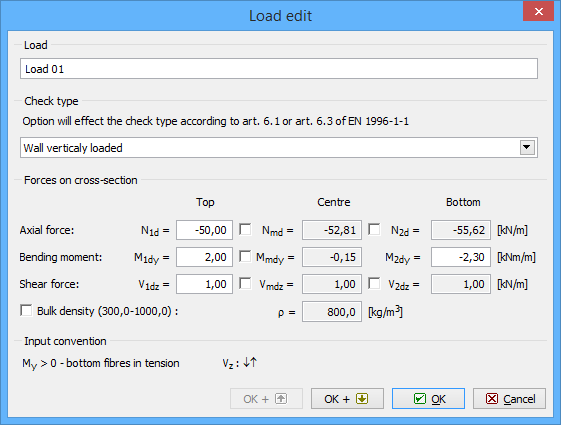Load edit
The internal forces and check type for individual load case can be input in this window. The appropriate equations for verification are selected according to the specified check type. These options are available:
Wall vertically loaded |
|
Wall vertically loaded - top |
|
Wall vertically loaded - centre |
|
Wall vertically loaded - bottom |
|
Wall laterally loaded - bending about horizontal axis |
|
Wall laterally loaded - bending about vertical axis |
|
All internal forces at underside of floor, at mid height and at top of floor can be input using load type "Wall vertically loaded". Some values can be calculated automatically using these rules:
- normal forces at mid height of wall Nmd and at top of floor N2d are calculated as a sum of normal force at underside of floor N1d and self-weight of wall or column. Self-weight is calculated using cross-sectional area, material density (can be input in the window "Masonry" or using the input line "Bulk density" in this window) and partial load factor γG= 1,35.
- shear forces at mid height of wall Vmdz and Vmdy and at top of floor V2dz and V2dy use the values of shear forces V1dz and V1dy that were specified at underside of floor.
- Bending moments at mid height of wall Mmdz and Mmdy are automatically calculated using linear interpolation between bending moments at top of floor M2dz, M2dy and at underside of floor M1dz, M1dy.
 Window "Load edit"
Window "Load edit"